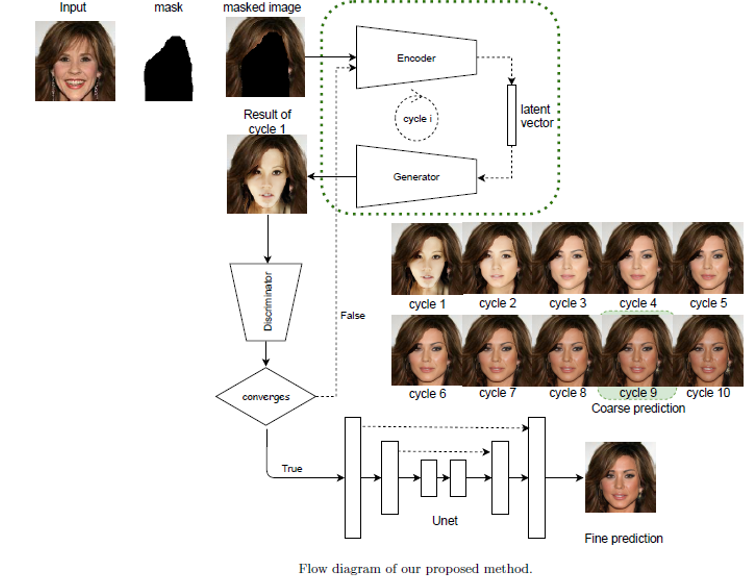Iterative Facial Image Inpainting Based on an Encoder-Generator Architecture
Facial image inpainting is a challenging problem as it requires generating new pixels that include semantic information for masked key components in a face, e.g., eyes and nose. Recently, remarkable methods have been proposed in this field. Most of these approaches use encoder-decoder architectures and have different limitations such as allowing unique results for a given image and a particular mask. Alternatively, some optimization-based approaches generate promising results using different masks with generator networks. However, these approaches are computationally more expensive. In this paper, we propose an efficient solution to the facial image inpainting problem using the Cyclic Reverse Generator (CRG) architecture, which provides an encoder-generator model. We use the encoder to embed a given image to the generator space and incrementally inpaint the masked regions until a plausible image is generated; we trained a discriminator model to assess the quality of the generated images during the iterations and determine the convergence. After the generation process, for the post-processing, we utilize a Unet model that we trained specifically for this task to remedy the artifacts close to the mask boundaries. We empirically observed that only a few iterations are sufficient to generate realistic images with the proposed model. Since the models are not trained for particular mask types, our method allows applying sketch-based inpaintings, using a variety of mask types, and producing multiple and diverse results. We compared our method with the state-of-the-art models both quantitatively and qualitatively, and observed that our method can compete with the other models in all mask types; it is particularly better in images where larger masks are utilized. Our code, dataset and models are available at: https://github.com/yahyadogan72/iterative facial image inpainting.
PDF Abstract

 FFHQ
FFHQ